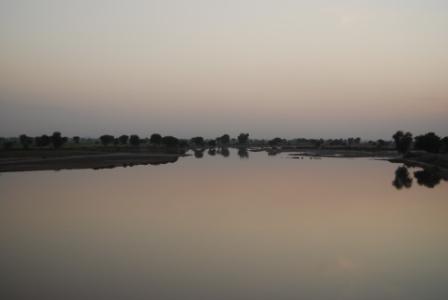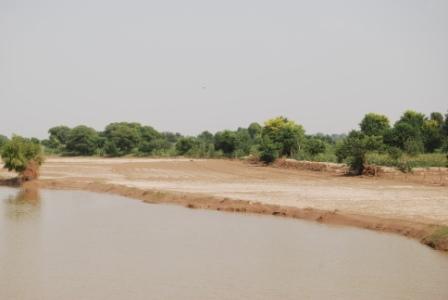|

Ganga Corridor
Linked Research Projects
Participating Institutions
Core Repository
Facilities
Multiplier effects
Publications
Contact Us
| |
1.
Ganga corridor
|
 The Ganga Plains, one of the key
corridors of the SSS programme, constitute one of the world’s most
extensive alluvial tracts and are home to hundreds of millions of
people, mostly dependent on agriculture. The Ganga plains are of great
significance from an academic standpoint, as they hold important
clues regarding the tectonic and climatic factors that governed the
interaction between the Himalayan orogen and the Foreland.
Understanding the landforms of the Ganga Plains, - their origin,
development and dynamic imprints is therefore of critical
significance to plan effectively for sustainable development of the
region and to track changes in the
alluvial landscape on different time scales – for example decadal,
century, millennial and higher order time scales of 104 –
105 years.
The Ganga Plains, one of the key
corridors of the SSS programme, constitute one of the world’s most
extensive alluvial tracts and are home to hundreds of millions of
people, mostly dependent on agriculture. The Ganga plains are of great
significance from an academic standpoint, as they hold important
clues regarding the tectonic and climatic factors that governed the
interaction between the Himalayan orogen and the Foreland.
Understanding the landforms of the Ganga Plains, - their origin,
development and dynamic imprints is therefore of critical
significance to plan effectively for sustainable development of the
region and to track changes in the
alluvial landscape on different time scales – for example decadal,
century, millennial and higher order time scales of 104 –
105 years. |
 |
|
The general non-availability of sub-surface
geological data and drill cores has been a serious impediment on
advancing our understanding of the history of alluvial plain
sedimentation. The projects funded under the SSS programme has
provided a major impetus to fill these gaps. Keeping in
view the considerable geomorphic diversity in the Ganga plains,
particularly from the Himalayan mountain front to the cratonic
margin and also in an west to east transect we proposed to study
alluvial stratigraphic development along segments of a N-S and E-W
transects in the Ganga plains, three major areas of interest were
identified:
-
Mountain exits of the Ganga river
-
Ganga-Yamuna
interfluve between Kanpur and Kalpi in western Ganga plains
-
Gandak megafan in the eastern Ganga plains.
|
 |
|
Following are the
specific research objectives for the Ganga corridor:
-
To understand the evolutionary history of the mountain exits
of the Ganga river system.
-
To understand the
stratigraphic framework and stratal architecture in the wide
interfluve of the Ganga and Yamuna rivers
-
To understand the surface processes, sub-surface properties
and their dynamics in an extensively used floodplain.
-
To develop a core archive facility at IIT, Kanpur for
preservation, maintenance and management of the drill cores.
|
|